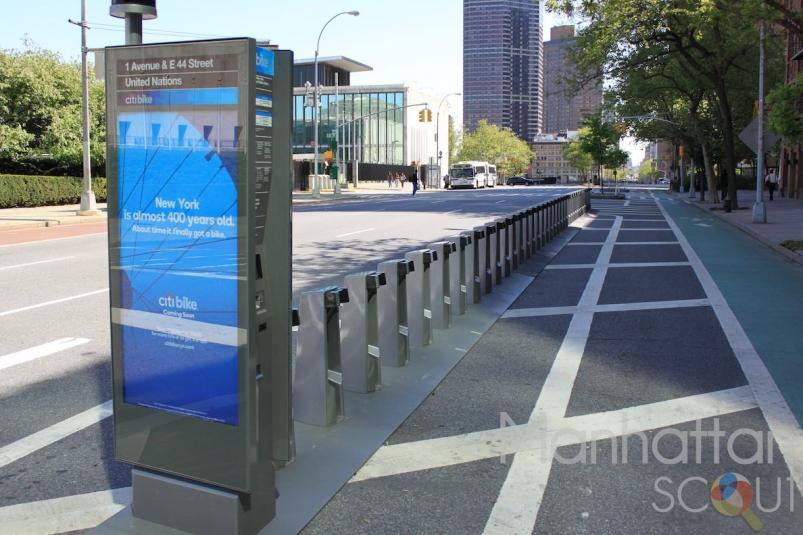New York City to Launch Citi Bike Share Program
After years of discussion and planning, New York City’s first bike sharing program is almost here. Cities like Washington, D.C., Denver, Barcelona, London, and Amsterdam have had a bike-sharing program for a long time and prove that the concept works. But there is no city like New York City. Monday, May 27th, Memorial Day, is the target launch date for the program and, even though the program is yet to begin, the criticism is getting louder. But before we get to that, here’s how the program works:
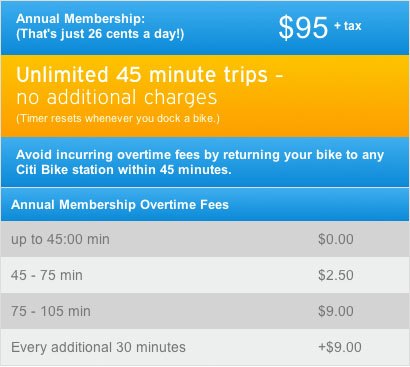
Price Options
1. The first option is to purchase an annual membership online for $95.00. This gives you unlimited 45-minute trips—but there’s a catch: you get charged heavily if you use a bike for more than 45 minutes at a time. If you use it up to 30 minutes longer, you pay an extra $2.50. For the next 30 minutes, you pay the previous $2.50 plus $9.00 more. And then you pay $9.00 for every additional 30-minute period. According to this schedule, it would cost over $400.00 to return the bike 24 hours late.
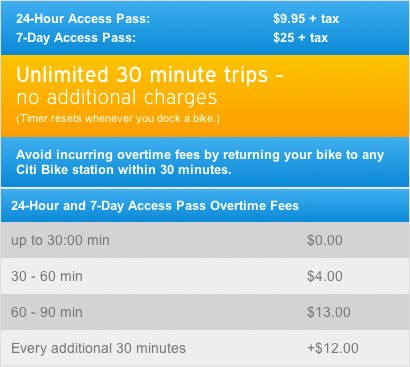
2. The next price option is to purchase a 24-hour pass at a Citi Bike
station kiosk. This costs only $9.95, but the overtime fees are even greater than they are with the annual membership. You pay $4.00 for the first 30 minutes past the 24 hours, $13.00 for the next 30 minutes, and then $12.00 for every additional 30-minute period after that. That would add up to over $550 to return a bike 24 hours late.
3. The last price option is a seven-day access pass. While this costs only $25.00, it has the same overtime charges as the 24-hour pass.
Unlocking, Riding, and Returning
The process is fairly easy. When you purchase a ticket, you receive a code number. The code number needs to be typed into a keypad on any dock where a bike is locked. Annual members have their own unique key that they use every time they take a bike. The bike can be returned to any docking station, and if the docking station is full you can get 15 additional free minutes from the “docking station kiosk.”
Docking Stations
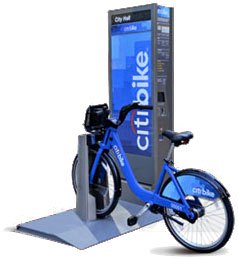
Criticism
Other critics are a little more serious. Some building owners have sued or are preparing lawsuits over the placement of the docking stations. CBS News reports that at least two buildings have joined the fight against having the docking stations right in front of their properties and that many other property owners are preparing to sue. So what’s the solution? Certainly, one solution is to move some of the docking stations around the block if it really disturbs the residents, which is what happened in Washington, D.C., a couple of times.
Another complaint is that the streets of New York are simply too dangerous for bicycle riders. Indeed, cyclists need to exercise caution, but we’re sure that as more bike riders find their way to the streets, the safer it will get. The City of New York started creating bicycle lanes a couple of years ago, but critics complain that some of these are even more dangerous than riding in the street. Pedestrians often don’t recognize them as bike lanes and car drivers can easily overlook bike riders when turning left or right.
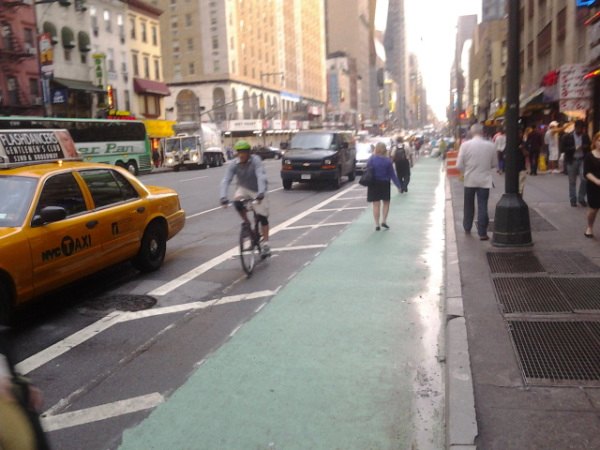
Take 8th Avenue in Midtown West, for example. The bike lane is on the left side of the street, with a slim parking line to the immediate right, and after that is the regular lane for cars. When cars turn left and cross the bike lane, they don’t see bike riders due to the parked cars which block their view.
Still another concern is that the docking stations take away parking spots. This, in fact, is true but, fortunately, the city has plenty of parking garages.
Prospect
Mayor Michael Bloomberg mentioned once that, historically, the streets of New York were not meant to be driven on but to be walked on. The bike sharing program is yet another approach to reducing the number of cars while simultaneously improving the air quality. Whether or not it will really be capable of improving the traffic flow is doubtful and remains to be seen. But it’s certainly an exciting development and could effect a change in how New Yorkers get about. We’ll just have to wait and see if Bloomberg and his administration will be able to motivate New Yorkers to use the bikes.

